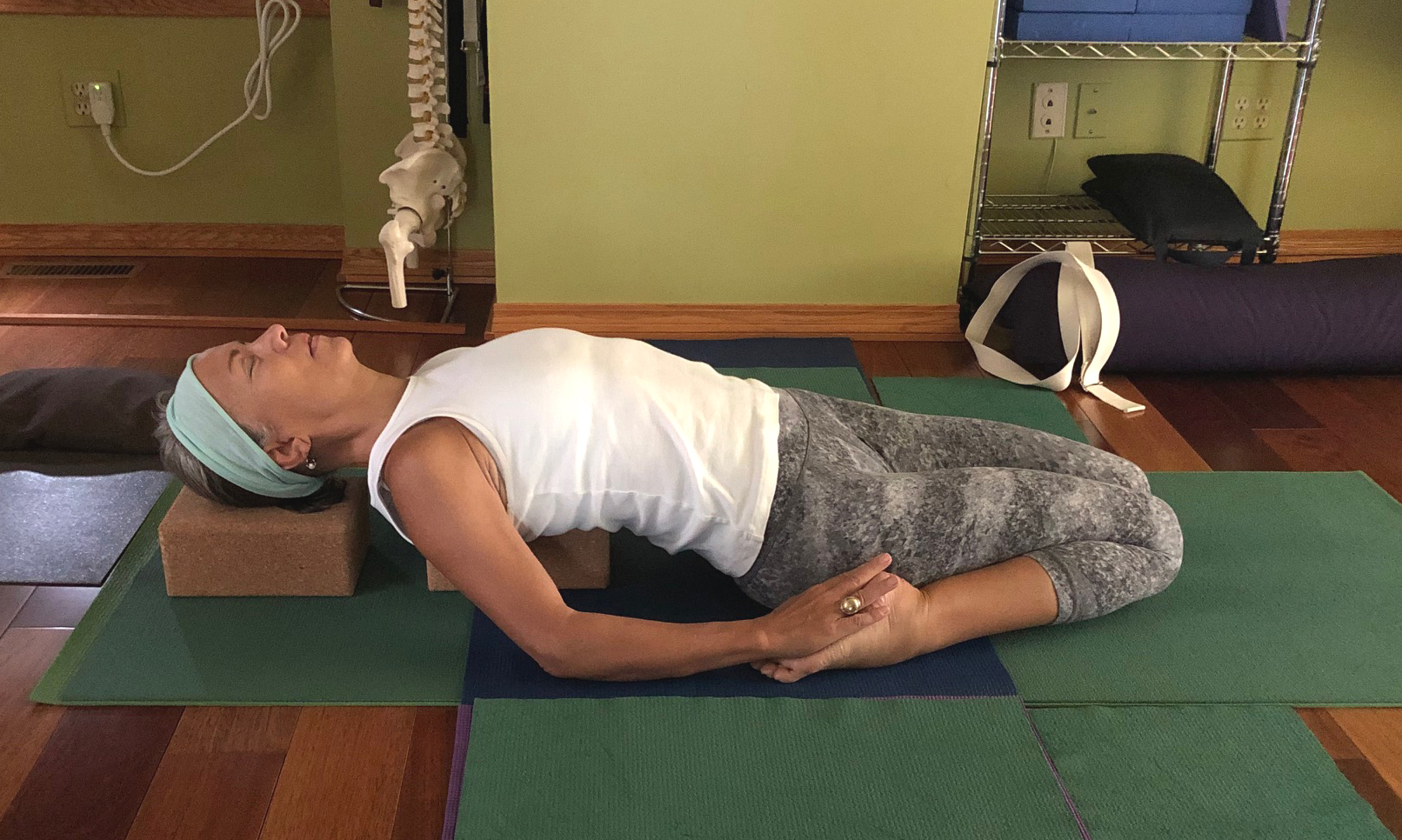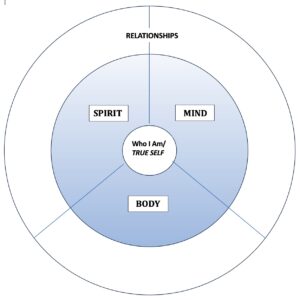In the study of yoga, Ayurveda is known as the healing wisdom and was discovered during higher states of meditative consciousness.
Just as there are no two people exactly alike, there are no two identical mind-body types (doshas). Your dosha is like your fingerprint. We each hold elements of all three doshas — vata, pitta, kapha. However, often two doshas express themselves stronger within each of us.
We are born in a perfect state of balance, but as life unfolds, we may find ourselves out of balance. Knowing your dosha type allows you to assess what and where the imbalance is and how to regain calm abiding and clear seeing. To return to balance is to live with meaning, health and happiness in the dosha combination that is your birthright.
The Vata dosha body type is always on the go. Movement and change predominate for this energetic, creative mind and lean body. An imbalanced vata dosha expresses in the body as weight loss, constipation, arthritis, restlessness and digestive challenges.
| VATA | AIR | ETHER |
| Strength | (heart chakra) | (throat chakra) |
| MOTION | COLD DRY IRREGULAR | NUMBNESS DEPLETED/CONFUSION TREMORS |
The Pitta dosha is our digestive fire responsible for body temperature, metabolism and physical suppleness. Too much pitta results in excess hunger and thirst and minimal sleep along with other fiery symptoms.
| PITTA | FIRE | |
| Flexibility | (solar plexus chakra) | |
| TRANSFORMATION | INTENSE HOT IRRITABLE | ERUPTIONS FEVERS/BURNING PAINS ACID INDIGESTION |
The Kapha dosha governs the structure (cells, muscles, bones, fat, sinew) of the body. Kapha’s are slow, steady and solid with naturally calm and loving constitutions. In excess, kapha manifests in weight gain, fluid retention, allergies and depression.
| KAPHA | WATER + | EARTH |
| Stamina | (sacral chakra) | (root chakra) |
| STABILITY | WET HEAVY COLD | CONGESTION LACK OF MOTIVATION INDIFFERENCE |
Our dosha constitution is intimately connected to the five elements of air, ether, fire, water and earth as you saw above. In turn, how we practice yoga can over or under stimulate our doshas as well as our chakras.
If your interest is peaked, and you are now speculating on your dosha type, here is a free three-minute test to help you make your determination. Once you have taken the test, read the intentions and considerations below for each type. Keep in mind the suggestions for your type as you choose which of the three asana sequences to practice. You may wish to try the other two asana practices at other times when you are expressing more of their qualities.
ASANA PRACTICE FOR YOUR TYPE
INTENT of a Vata practice: soothing, grounding & self-supporting
- Use the muscles in fatiguing (repetitions) and grounding (holding) ways
- Work hard but not fast; no jumping in vinyasas for joint protection
- All standing poses; heel into wall
- Sitting, inversions, forward bends, twists
- Slow, safe movement in backbends
- A long Savasana to give muscles time to recover
- EXCESS vata creates fidgeting and fear
- All standing poses; heel into wall
INTENT of a Pitta practice: calming, centring & relaxing
- Work at 75% effort, which is a mental challenge
- Relax, surrender, give up
- All standing poses except VI, VII, VIII (heating qualities)
- Sitting, forward bends, twists
- Relaxing inversions (Viparita Karani, Salamba Sarvangasana, Sirsasana for 3 minutes or less as very heating)
- Caution with backbends (very heating)
- EXCESS pitta creates heat then tightness and irritation
INTENT of a Kapha practice: stimulating, strengthening & moving
- Warm up properly
- Keep the practitioner moving
- All standing poses
- Sitting, backbends, twists, inversions (caution if body is heavy)
- Avoid forward bends or follow them with a vinyasa to stay warm and uncongested
- Short Savasana (5 minutes, maximum 10)
- EXCESS Kapha creates inertia, difficulty beginning, and attachment
ASANA SEQUENCES:
VATA PITTA KAPHA
(large intestines) (small intestines) (stomach)
Standing Poses S. Baddha Konasana Surya Namaskar 10m
A. M. Vrksasana A. M. Svanasana A. M. Vrksasana
Pincha Mayurasana Uttanasana Pincha Mayurasana
Sirsasana Sirsasana Sirsasana
(OR variation of Sirsasana)
Sarvangasana Sarvangasana Sarvangasana
(OR variation of Sarvangasana)
Dhanurasana Contraction Backbends Dhanurasana
(OR Backbend thru chair)
Urdhva Dhanurasana Urdhva Dhanurasana Urdhva Dhanurasana
Vasisthasana Supta Virasana Balasana
Purvottanasana Parsva Sukhasana Vasisthasana
Siddhasana Siddhasana Siddhasana
(Ujjayi Pranayama) (Nadi Shodhana) (Nadi Shodhana) 10m
Ardha Baddha Padma Paschimottanasana Parsva Upavistha
Konasana
Triangmukaipada Janu Sirsasana Parivrtta Janu Sirsasana
Paschimottanasana
Paschimottanasana Paschimottanasana Urdhva Mukha
Paschimottanasana
Bharadvajasana I Ardha Bharadvajasana I
Matsyandrasana
Jathara Parivartanasana (for all 3 doshas)
(bent knees; top leg extends; if at ease, straighten both legs)
Savasana Viparita Karani Salamba Setu Bandha
(longer hold & Savasana Savasana
keep warm)
Bolstering or balancing your ayurvedic dosha strengthens your immune system, which is the gift that each of us can give during this coronavirus pandemic. Be positive and be well. Namaste.





